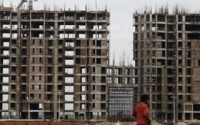Home insurance – how it works

Home insurance – how it works
Natural disasters like Fire, Lightning, Storm, Cyclone, Floods or Earthquakes are unforeseen and result in dense damage to not only life but also priced possessions like your house and its contents. Events like theft and burglary are also becoming common in the present day scenario. Naturally, the emotional stress and economic loss arising from such destruction of property is exorbitant.
Your dream home which you bought after toiling hard for years together is reduced to ashes within minutes if a calamity strikes. Realization dawns upon you – what if you would have insured the property against unforeseen and uncontrollable forces of risk?
By opting for a Home Insurance or a Shopkeepers Insurance cover, an individual can decrease the financial losses stemming from such untoward incidents and empowers him to recuperate in a better way.
Here are some notes on home insurance for retail consumers that will help you comprehend the concept.
Insurance companies compensate for the cost of physical damages caused to a property and the contents due to Fire, Lightning, and Storm/Cyclone, Floods & Earthquakes Under the basic Standard Fire and Allied Perils policy. However, it must be noted here, that in case of total destruction of the insured premises, only the cost of Reinstatement i.e. the current cost of reconstructing the property will be reimbursed, and not the cost of land.
Therefore before entering into an agreement with the insurance company, you must try to figure out the current cost of reconstruction as available with the local authority, and mutually agree upon the sum insured.
Some companies offer an alternative for Reinstatement condition where the individual is suggested to consider opting for Market Value of the property which means that payment towards Reinstatement is the cost after deducting the depreciation value of around 2.5% per annum on the age of the building.
Individuals residing in a flat in a housing society can consider an ‘Agreed Value’ cover. Here, the price of the insured property is calculated based on the market value, per square feet of the area as mentioned in the Ready Reckoner for Property Tax and Stamp Duty issued by the Revenue Department of the State Government.
Now-a-days, some insurance companies also provide Rent for alternate accommodation in case of total loss to the property and Personal Accident cover for bodily injuries which may have occurred due to the listed risks mentioned in the policy document.
Check out how to calculate the ‘Sum Insured’ for protection towards Structural damages (Total Loss) caused due to perils as listed by the insurance companies in their respective policy documents.
Sum Insured = Area of the “Building” (Square Feet) indicated in the Registered Sale Deed Agreement (1000 Sq Ft) X Present Day Cost of Construction in area/ locality where the property is situated as per the data available with the local government authority (4000 per Sq Ft) X (1- Depreciation at the Rate of 2.5 % per annum X Age of the Building (9 Years).
Hence, Sum Insured = 1000 X 4000 X (1-0.025X9) = 31 Lakh.
Insurance companies have separate policy offerings for protection towards the contents of your house. Content Insurance or Householder Insurance Policy basically insures possessions like Electronic Equipment, Gadgets, Personal Technology items like Television Sets, Laptops, Tablets which are highly prone to Theft and Burglary.
On loss of such assets, the insurance company will compensate based on the ‘Market Value’ of the lost product. For other valuable items such as Jewellery or expensive Watches, the reimbursement is up to 10 percent of the Sum Insured, subject to the policy opted by the insured in consultation with the valuator.
But as they always say, one must read all the policy documents carefully, understand in detail what kind of protection a particular policy offers and the procedure of execution of claims if at all you require to.




No Responses